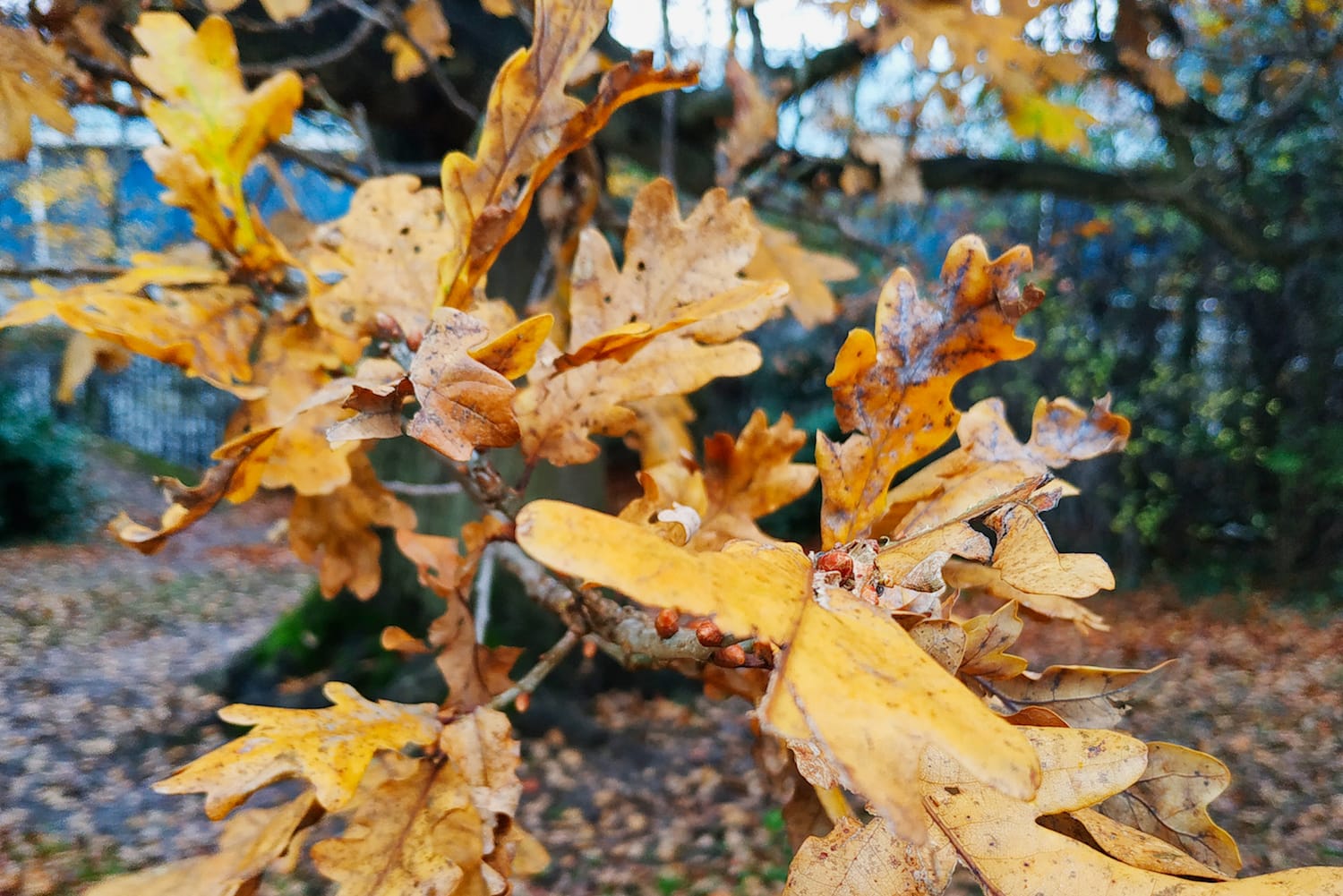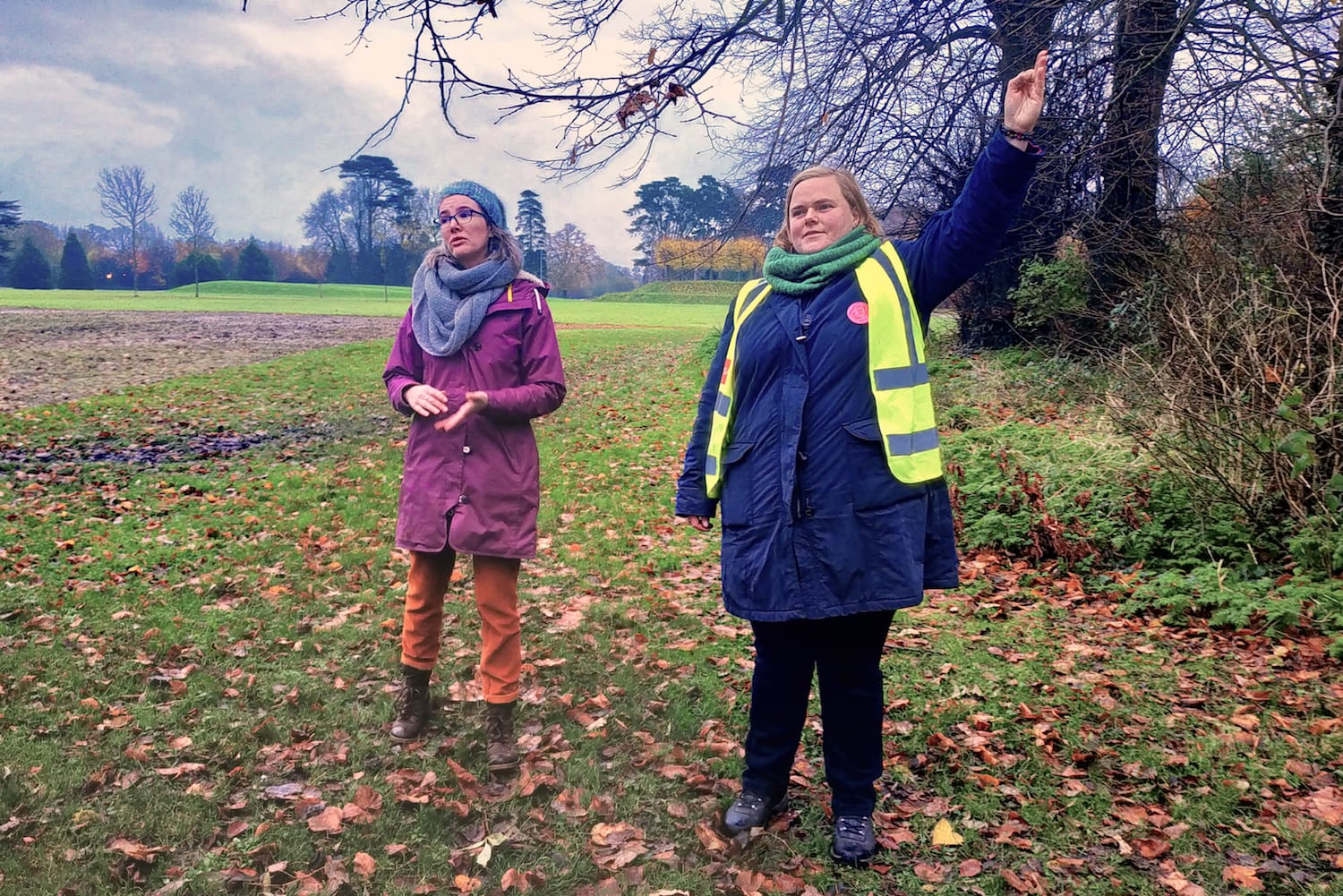What’s the best way to tell area residents about plans for a new asylum shelter nearby?
The government should tell communities directly about plans for new asylum shelters, some activists and politicians say.
“My favourite thing is sharing stories,” says Molly Aylesbury, one of the organisers. “Sometimes people get really emotional when they talk about plants.”

“I am not a medical professional,” says Molly Aylesbury, by way of a light-hearted disclaimer.
Behind her, she points out a Sambucus nigra or elder plant, which has some parts known for medicinal properties and others that are, well, poisonous.
“I think it was Terry Pratchett who said that everything is edible but some things are only edible once,” she paraphrases.
There’s a ripple of laughter before Aylesbury continues, describing the plant’s other characteristics.
It’s a chilly overcast Sunday afternoon, yet 14 people have turned out to Santry Demesne Park for the monthly Wildflower Walk put on by Mies Stam and her co-organiser, Aylesbury.
It’s a mixed group. A couple of children in brightly coloured coats. A mother-daughter duo, and the rest, who have ventured outdoors in want of a Sunday-afternoon activity.
The adults pay €5 and are given a list of 14 plants they’ll be identifying during the two-hour stroll.
Stam and Aylesbury have their areas of expertise.
“Third-generation botanist” Stam identifies trees and plants by their buds, leaf shape, and the direction their thorns are point in.
Forager Aylesbury shares what’s safe to eat and, in many cases, fascinating bits of plant lore.
Stam and Aylesbury started their Dublin and Carlow Wildflower Walks in 2013, leading groups in identifying varieties of plants that are native and non-native to Ireland.
The walks started mainly as a way for Stam to talk about the plants she was passionate about, Stam says.
She picked up how to identify different plants early in life. Her parents had, and still have, a nursery, she says.
“We used to play a little game where they’d put five plants in front of me and say, ‘Put it back in the right place,’” says Stam. “That’s kind of how I started off identifying things.”
Friends since 2008, Stam and Aylesbury met at University College Dublin. Stam was studying botany. Aylesbury was on the environmental biology course.

At first, Aylesbury came along to the wildflower walks for moral support, she says.
But people starting asking questions about what they could eat, and so on. “I ended up kind of answering the questions and it just became a whole part of it,” Aylesbury says.
Stam lives in Dún Laoghaire and Aylesbury is based in Carlow, but on Sundays once or twice each month, the two meet in locations like Killiney Hill, Bull Island, and Saint Anne’s Park, depending on the time of year.
Over the last twelve months, Stam and Aylesbury have rotated through a dozen locations across North and South Dublin and Carlow.
“It’s a hobby that we managed to semi turn into a living,” Aylesbury says.
Today’s turnout at Santry Demesne Park of 14 people is slightly above average, though Stam and Aylesbury have walked with groups as large as 20 or more, and as small as one.
The group arrives at number 6 on the plant list.
It’s a Quercus robur, or pedunculate oak. It has sturdy limbs, its branches and leaves climbing upward and outward into a broad canopy.
Stam draws attention to the clusters of buds on the tree, and its leaves. Both can help demystify what kind of oak this is, she says.
It takes 40 years to produce acorns, Aylesbury says. She points out a large hole at the base of the tree. The group huddles closer to look.
The bottom of its trunk is carpeted with bright green moss. It’s been hollowed out, as if by lightning or some other force.
Aylesbury and Stam decide together which plants to talk about in each park or outdoor space.
Stam makes a list of about 30 possible suspects. Aylesbury refines it, based on what she thinks will be most interesting.

Not every park they visit will have the same varieties of plants and trees, either.
One of Stam’s favourite parts of the walks is being surprised – like when hogweed is still flowering in late autumn, she says.
Or when they come across a plant that neither have seen before, as happened in Carlow, not long back.
“This is a witch’s tree,” Aylesbury says, at the foot of a Betula pendula, or silver birch. Its autumn branches resemble a witch’s broom.
Aylesbury leans into the lore. Some plants repel witches, some attract them. Some summon spirits, while others draw in good or bad luck.
“My grandfather, it’s his fault that I’m like this,” she says later. “He was really into all that stuff and fairy stories.”
He was into foraging too, a knowledge he passed on to her. But he died three years ago, she says.
“Now when I do it and I go out and share the stories it’s a little bit emotional for me,” Aylesbury says.
The air grows colder as the walk reaches its two-hour mark, but the group is still engaged.
Some ask questions and take notes. Two children run ahead, collecting fallen leaves.
During their time organising the wildflower walks, Stam and Aylesbury have had regulars who show up multiple months. Some have even completed their entire rotation of parks.
“My favourite thing is sharing stories,” Aylesbury says. “Sometimes people get really emotional when they talk about plants.”
They remember something from their childhood, or a smell brings back a rush of memories, she says. “I like the human aspect of our relationship with the plants.”
Get our latest headlines in one of them, and recommendations for things to do in Dublin in the other.